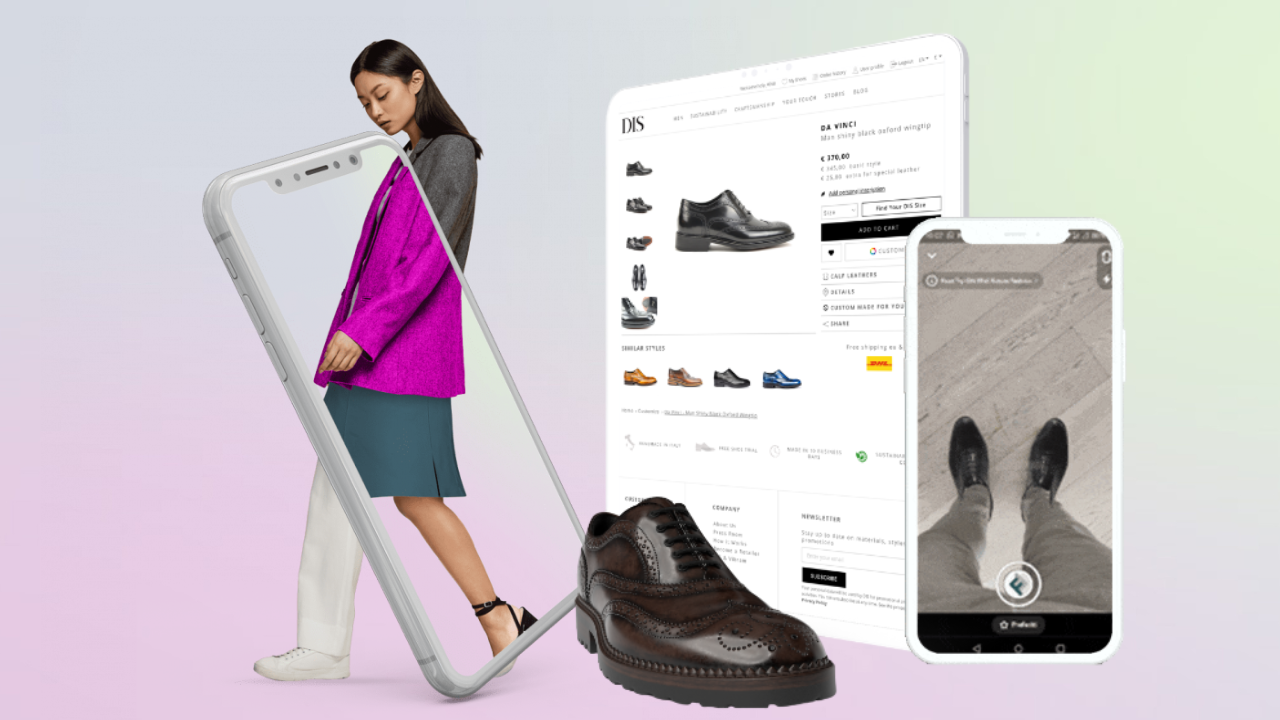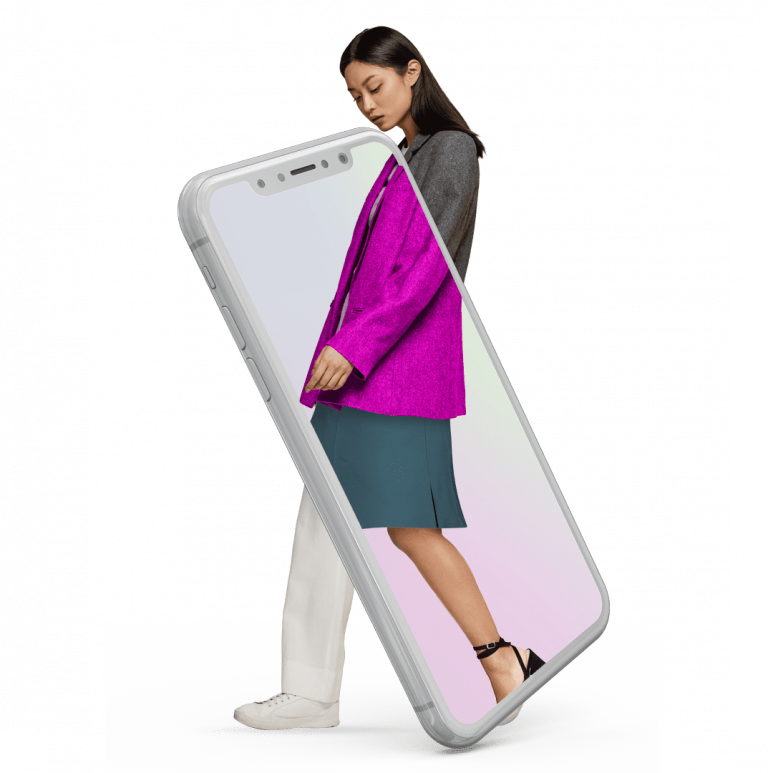What’s the future of fashion? If you ask most people, they’ll say that it’s all about tailored experiences and trying on clothes virtually before you buy them. This way, customers can pick out the perfect top and match it with their favourite jeans without any risk of buying clothes that don’t look good on them.
With more companies offering this service, there’s no reason not to take advantage of it! Virtual try-on technology is revolutionizing the fashion industry. Let’s explore the reasons behind its significant impact.
What Is Virtual Try-On And How Does It Work?
When you think of virtual reality, what comes to mind? Gaming? Movies? While those are certainly popular applications for VR, today it plays a crucial role also in the shopping world. That’s right – virtual try-on is a thing, and it’s changing the way we buy clothes, shoes, jewellery, and more.
So, how can we define Virtual try-ons, especially fashion virtual try-ons? Simply put, it’s a way to try on items without having to actually put them on. You can do this either by using a special headset or by viewing an image of yourself in the clothes. This allows you to see how the clothes fit and look without having to leave your home.
Why is virtual try-on a trend today? Research shows that most online shoppers are open to using VTO. A 2021 study found that 69% of respondents were interested in using VTO for apparel shopping. Virtual try-on fashion is becoming the new normal. Why not meet customer expectations?
The Benefits Of Virtual Try-On for Fashion
When it comes to virtual try-on, fashion retailers have a lot to gain. There are many benefits of virtual try-on that can drive traffic and sales for retailers.
- First and foremost, virtual try-on allows customers to see how they look in the clothes they’re considering buying without having to go into a physical store and try them on. This is especially beneficial for shoppers who live far from the retailer’s physical location or those who don’t have the time to go into a store;
- Another advantage of virtual try-on is that it can help customers make better buying decisions. With virtual try-on, they can see how different styles and colors look on them and get a sense for what looks good and what doesn’t. This can lead to more informed buying decisions and fewer returns;
- Virtual try-on is also a great way to increase traffic and sales for fashion retailers. When customers can try on clothes virtually, they’re more likely to buy items that they wouldn’t have otherwise. In addition, virtual try-on can help retailers reach new customers who might not have visited their store otherwise;
- Virtual try-on is also a crucial ally in reducing returns, one of the major challenges for e-commerce today. It allows customers to make more informed decisions, leading to more accurate expectations about the products they will receive;
- Additionally, virtual try-on can significantly reduce the need for physical samples and prevent unsold stock. By allowing customers to virtually try on clothes and shoes using 3D twins, businesses can become more sustainable and cut costs associated with producing physical samples and avoiding overproduction.
Overall, virtual try-on is a great way for fashion retailers to improve their customer experience and increase traffic and sales. With virtual try-on, customers can find the right clothes for them without having to leave their home, and retailers can reach new customers and increase sales. It’s a win-win for everyone involved!
How Virtual Try-On Is Changing The Fashion Industry
The virtual try-on is changing the fashion industry by giving customers a more realistic view of how clothes will look on them. This is done by allowing customers to try on virtual versions of clothes before they make a purchase.
Virtual try-on for retail also help to increase sales, as customers are more likely to make a purchase if they can see how the clothes will look on them. In addition, virtual try-on technology is becoming more and more advanced, with new features being added all the time.
For example, customers can now use virtual reality for fashion to try on clothes in a virtual setting, think about the well-known virtual fitting rooms. This technology is sure to revolutionize the fashion industry, and it will be interesting to see what new developments are made in the field of virtual try-on in the future.
The Future of Virtual Try-On: AI-Powered Experiences
The future of virtual try-on is incredibly exciting, especially with the integration of AI-powered experiences. AI can fine-tune virtual try-on technology to ensure perfect fit and precise measurements for each customer. Imagine shopping for clothes and being confident that what you see on the screen will look just as good in real life.
Zakeke’s Virtual Try-On is leading the way with innovative features like AI-driven head measurements and pupillary distance calculations for eyewear. This level of precision ensures that customers not only find styles they love but also enjoy a perfect fit, enhancing their overall shopping experience.
With AI at the helm, virtual try-on is set to revolutionize the way customers shop, making it more accurate, personalized, and enjoyable.
WebAR Virtual Try-On VS App-based VTO
When choosing the best technology for Virtual Try-on, WebAR VTO stands out over app-based options. Why? It’s all about ease and accessibility.
With WebAR VTO, customers can try on clothes right in their web browsers without the hassle of downloading an app. This seamless experience makes it super convenient for customers, encouraging them to engage more with your products.
Plus, it works smoothly across all devices, ensuring everyone can enjoy the same great experience. For you as a merchant, this means happier customers, fewer barriers to engagement, and more sales. So, if you want to offer the best VTO experience, WebAR is the way to go.
How to Choose The Right Virtual Try-On for Your Store?
There are several virtual try-on solutions available, and each has its own strengths and weaknesses. Some solutions use 3D models to show how the product looks on the customer, while others use virtual reality to create a virtual environment in which the customer can try on the product.
The most important factor in choosing a virtual try-on solution is the realism of the virtual environment. The customer should feel as if they are trying on the product in real life. If the virtual environment is not realistic, the customer will not be able to make an informed purchase.
Another important factor is the customization of the virtual environment. The customer should be able to change the color, size, and style of the product to match their own preferences. This level of customization allows the customer to create a unique shopping experience that meets their individual needs.
Finally, the virtual try-on solution should be easy to use. The customer should be able to navigate the virtual environment easily and find the products they are looking for. The virtual storefront should also be easy to use, so the customer can make a purchase quickly and easily.
Virtual Try-On Fashion + Real-Time Customization: The Perfect Mix
Combining virtual try-on fashion with real-time customization creates the perfect mix for today’s demanding customers. They crave immersive experiences that allow them to see how products look on them while also personalizing those products to their liking. This combination is the key to staying competitive and achieving success in the modern market.
With Zakeke, merchants can effortlessly offer both virtual try-on and real-time customization on a single platform. This seamless integration means customers can try clothes, shoes, or accessories online and customize them in real-time, creating a shopping experience that is both engaging and highly personalized.
Conclusion
The future of fashion lies in customization and virtual try-on. With Augmented Reality fashion shopping, customers will be able to configure their products in 3D, trying on different colors, styles and sizes to see what looks best.
This will allow for a more personalized shopping experience, as well as give customers a better idea of what they’re buying. And with virtual reality, customers will be able to experience products as if they were actually wearing them.
This is already revolutionizing the fashion industry, making it more accessible and convenient for shoppers all over the world.














